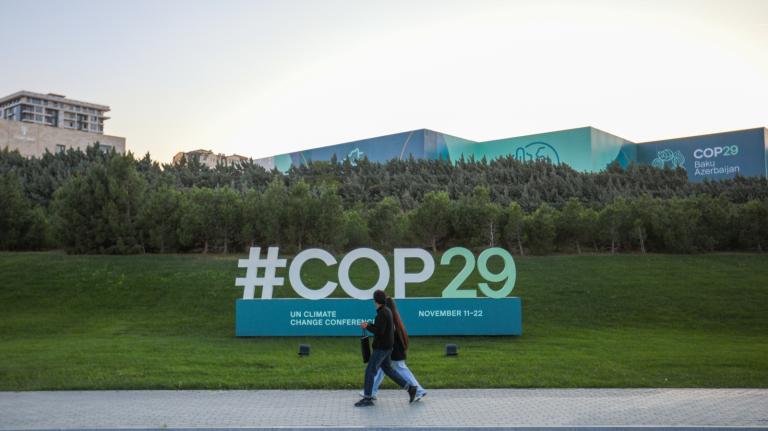 Walmart is moving like a tortoise toward its clean-energy goal.Context is critical to understanding Walmart’s sustainability initiatives and their impact on the retailer’s overall environmental footprint. But context has been sorely absent in the news media’s coverage of Walmart’s green efforts. Even within the environmental community, conversations about Walmart tend to miss the big picture.
Walmart is moving like a tortoise toward its clean-energy goal.Context is critical to understanding Walmart’s sustainability initiatives and their impact on the retailer’s overall environmental footprint. But context has been sorely absent in the news media’s coverage of Walmart’s green efforts. Even within the environmental community, conversations about Walmart tend to miss the big picture.
Walmart’s renewable-energy activities provide a perfect example. Six years ago, the company announced that it was setting a goal of being “supplied by 100 percent renewable energy.” Succinct, powerfully stated goals are a signature of Walmart’s sustainability campaign — in part, it seems, because journalists often repeat these goals verbatim, so they function like stealth marketing slogans that infiltrate media coverage. Walmart’s renewable-energy goal has been especially effective on this front, appearing in thousands of newspaper articles and countless blog posts. Many of these stories use the goal as a jumping-off point to highlight the retailer’s renewable-energy projects, which include putting solar panels on 130 stores in California and buying 180 million kilowatt-hours of wind power in Texas annually. These stories create the overall impression that Walmart is making great progress on renewable energy.
But what if, rather than repeating Walmart’s stated goal of 100 percent renewable power, these news stories had instead reported that the company currently derives less than 2 percent of its electricity from its solar projects and wind-power purchases? That’s not a figure Walmart has published, and journalists have done little to bring it to light. At its current pace of converting to renewables, it would take Walmart about 300 years to get to 100 percent clean power. Some of its competitors are already there. Kohl’s and Whole Foods (both of which, I should add, have their own problems when it comes to the gap between their environmental PR and reality) have fully converted to renewable power, as have many independent retailers.
What’s holding Walmart up? It doesn’t want to spend the money.
“Because wind and solar power generally cost more than electricity from coal, nuclear or natural gas in most places, Walmart can’t or won’t buy clean energy on a scale that matters,” sustainable-business reporter Marc Gunther wrote earlier this year. Walmart, which reported operating profits of $25.5 billion last year, said as much in its latest sustainability report: “it has sometimes been difficult to find and develop low-carbon technologies that meet our ROI [return-on-investment] requirements.”
This a very different picture from the one the media have presented so far, which has portrayed Walmart as taking a leadership role on renewable power.
Another step back adds even more context: While the company has been talking big about renewable energy, its greenhouse gas emissions have been rising steadily. Between 2005 and 2009, Walmart’s reported emissions in the U.S. grew by roughly 7 percent. In Asia, they doubled. The company says its operations produced 21 million metric tons of greenhouse gases in 2009, and it expects 30 million metric tons of cumulative growth in emissions by 2015.
Neither Walmart’s renewable-energy projects nor its efficiency efforts are operating at a scale even remotely in league with the company’s size and growth trajectory. In the U.S., Walmart’s energy-efficiency steps have reduced energy use in stores built before 2006 by 10 percent, on average, saving about 1.5 million metric tons of CO2 annually. But new stores built in the U.S. since 2006 have added at least 3.5 million metric tons to Walmart’s yearly CO2 output.
The big payback
Commentators often note that cutting use of fuel and electricity saves Walmart money. But this is small change compared to the real payoff: a greener image and an enormous amount of positive publicity. This PR boost has enabled Walmart to accelerate the pace of its expansion. Six years ago, even the retailer’s own customers were starting to avoid its stores, while its development plans in cities like New York and Washington faced an impenetrable wall of opposition. Today, public opinion has shifted. Walmart’s store proposals, especially in the environmentally conscious Northeast and West Coast, are moving forward with less friction than before.
With fewer obstacles in its way, Walmart is anticipating big growth over the next couple of years. In the fiscal year that will end on Jan. 31, 2012, Walmart expects to have added between 36 and 39 million square feet of store space worldwide, and over the next year, between 45 and 49 million more — altogether, the equivalent of up to 470 average-sized supercenters. It also expects, next year, to grow sales by 5 to 7 percent, or $21 to $29 billion.
The company’s growth and sales goals always have specific time frames attached, of course, while its renewable-energy goal remains as undefined as ever. So as Walmart expands, thanks in part to goodwill generated by its green campaign, its environmental footprint will keep expanding right along with it.
Next up: Whatever happened to Walmart’s Sustainability Index?




